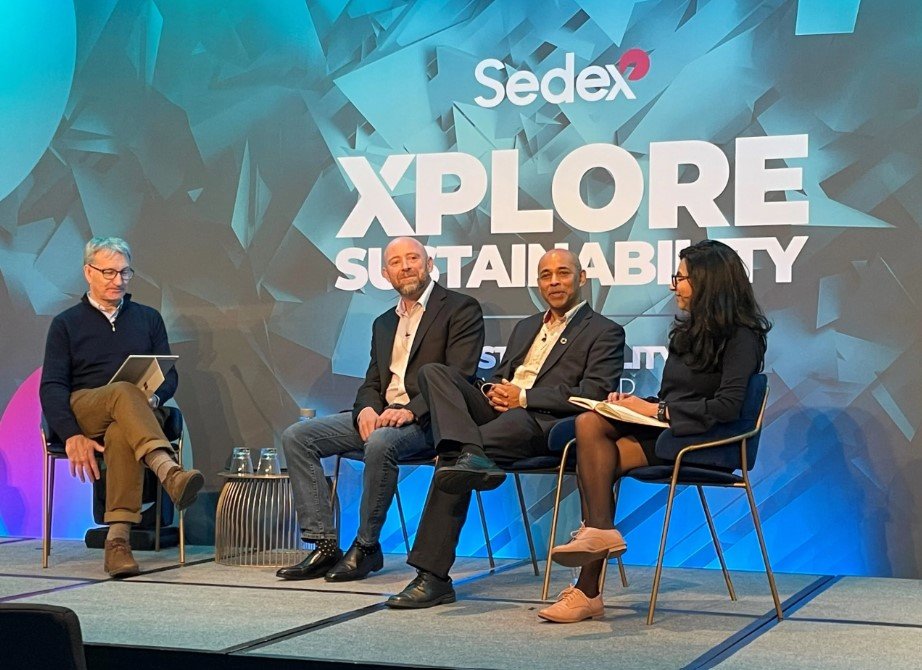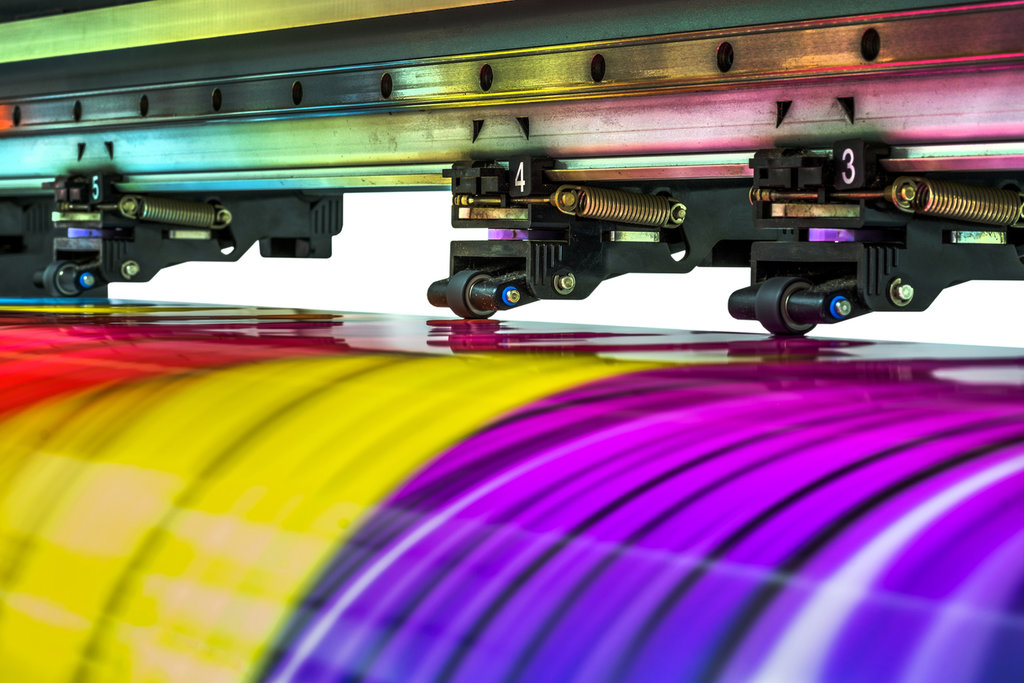Feature
Unwrapping supply chain traceability
How far down the supply chain is visibility required to truly meet ESG goals? Isatou Ndure uncovers how food and beverage brands can scale their efforts.

Inside Packaging attends a Sedex panel discussion on supply chain traceability. Credit: Inside Packaging
Apanel discussion at the Supplier Ethical Data Exchange (Sedex) Xplore Sustainability conference titled “Supply chain traceability: how far is far enough,” saw industry experts from food and beverage company, Nestlé, confectionary brand, Tony Chocoloney, and networked ingredients marketplace, TraceGains, discuss how to leverage one-tier relationships and technology within the supply chain.
The panel discussion included Nestlé UK sustainable sourcing manager, Robin Sundaram, Tony Chocoloney impact navigator, Pavi Ram, and Paul Bradley senior director of product marketing of TraceGains. Meanwhile, Sedex commercial director Mark Hooper moderated the session.
Supply chain traceability and mapping
The need to ‘map’ a supply system is a prerequisite for tackling many modern supply chain difficulties.
“When we looked at our supply chain, we started with ingredients that we didn’t know how to play with straight away,” explained Nestlé UK’s Sundaram.
“We started by looking at what and where the risk was in the supply chain. For instance, deforestation risks, child labour, cocoa, and human rights challenges.
And then the second question was how do you then start to tackle it?
To tackle these risks, Nestlé began working with its suppliers and getting them to open up and start necessary discussions within their field of communication. The company also worked with NGOs and third parties who could support their imports of hazelnuts and cocoa.
Ram explained Tony Chocoloney has a sourcing model with five sourcing principles and traceability is the very foundation.
“We believe that unless you know where and under which conditions your commodity is grown, you cannot take full responsibility for it,” she pointed out.
Ram also added: “With cocoa, the two biggest sustainability issues are labour issues such as child labour, and deforestation. Knowing where your cocoa is grown, and who is growing it, helps you identify the risks in both these issues.”
The importance of leveraging tier-one relationships
Sundaram suggested engaged suppliers are key to full supply chain traceability.
He said: “They’re the ones that are leading on a lot of it and we’re working with them. If they’re happy to support a point in their resource, that’s a big win.”
Companies need to develop a relationship with tier 1 suppliers to get full transparency on their businesses. So, for both Nestlé and Tony Chocoloney that would be the factory that produces their products.
Tier two suppliers are the source where tier one suppliers get their materials. For example, the factory that supplies Nestlé and Tony Chocoloney with cocoa.
Meanwhile, tier three suppliers or partners are one step further removed from a final product and typically work in raw materials for instance the workers that farm cocoa to Nestlé and Tony Chocoloney.
Sundaram explained: “We’ve worked with an amazing charity called Unseen and they manage the [UK] Government’s modern-slavery helpline, and help us deliver training to our staff around that.
“We share all of our supplier information to Unseen and not just us, M&S, Tesco, and others are involved. They’re building a picture of where modern slavery is happening and where it’s moving around the country. Now, that’s a great start.”
Sundaram pointed out that although organisations like Unseen are giving companies a great start, businesses need tier one, tier two and tier three to further build on the supply chain because that is where the risks lie.
Sundaram added: “More and more we’re looking at it through procurement and contract tenders. Once you get tier one on board the rest will follow and that’s one of the approaches we’re taking.”
TraceGains’ Bradley describes a “360-degree view of supply performance” through the tiers, where a decision around prioritising every single node in the supply chain, where those resources are going, where companies need to invest and what it could lead to.
He continued: “It involves an understanding of who the supplier entities are that we want to invest in, build strong relationships with and collaborate with. I would suggest that we look across multiple dimensions.
“We’re concerned about ESG performance and its various aspects, but we should be focusing on whether that supplier is responsive to our requests. Do they consistently deliver good products? Does that product perform well in the manufacturing environment? Are there recalls? Are there regulatory things happening out there and what landscape is unfolding for that person?
“Those are all the things where there are multiple sources of data out there in the world and that data can be aggregated. It can give us a richer platform for relationships for driving priorities.”

Mines in Bayan Obo in Inner Mongolia, China, extract one the largest deposits of rare earth metals found in the world. Credit: Bert van Dijk/Getty images
Technology and data within the supply chain
Supply chains need to be technology-driven and digitally enabled to be resilient, flexible, and transparent.
Turning to data and analytics to manage the supply chain can give companies better insight into aspects of their operations like customer demand and delivery inefficiencies.
Sundaram explained technology and data offer great insights and it is future-proof.
“We’re using the technology that was developed for the Mars missions to dig into the ground,” he said.
We're using the technology that was developed for the Mars missions to dig into the ground.
Ram added: “The technology used today will become more advanced. The quality of our mapping data has improved, and it keeps improving year after year, which means that by improving the mapping data, you improve the satellite data as well. Originally, farmers were not able to see the risk of deforestation three years ago, but now they can.”
Bradley shared that it’s very easy to have an unrealistic expectation of what technology solutions can do for us.
“Boots on the ground in a field in say Kenya is not something that any technology platform itself can provide,” he said.
You can’t always be everywhere all the time and you can’t always see what is going on, pointed out Sedex’s Hooper.
Bradley added: “Data is just data until someone reacts to it, but systems can still do something really valuable in making the data present when the data is necessary and when those decisions need to be made.”
The future of human rights due diligence in supply chains
The panel briefly discussed the future of human rights due diligence in global supply chains. As legislation and stakeholder pressure around the world pushes companies to address and prevent human rights abuses in the supply chain, the mechanisms to do so can drive unintended consequences.
Ram highlighted that legislation is there to ensure due diligence practices are implemented and practised. He believes it protects companies when they are trying to do the right thing but still find issues because it shows the different steps have been carried out.
In the closing remarks, the panel touched on how organisations should tackle supply chain visibility.
Sundaram said: “It’s becoming more important. If you don’t do it, you’re going to get left behind when the regulation comes whether that’s human rights or environmental due diligence. It’s a case of companies prioritising and taking one step at a time.”
Meanwhile, Ram concluded: “If not now, when? Now is the time to ask the questions. Now is the time to put people and the planet over everything else and the profits and businesses will follow.”